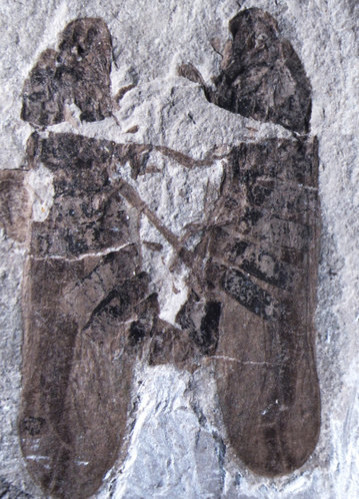Endless Love: Oldest Fossil Of Mating Bugs Identified By Scientists

A 165 million-year-old moment of passion has been preserved for all to see with the help of one extremely rare fossil.
Recently uncovered by a team of scientists analyzing a large collection of insect fossils in Beijing, it shows a pair of copulating froghoppers who made their home in what is currently northeastern China, reports Discovery News. Known as the “Forever Love,” the fossil now stands as the oldest known record of copulating insects. The research team reported their discovery on Wednesday in the journal PLoS One.
“We found these two very rare copulating froghoppers, which provide a glimpse of interesting insect behavior and important data to understand their mating position and genitalia orientation during the Middle Jurassic,” said co-author Dong Ren of Capital Normal University in China in a press release. The team added that scientists have a limited understanding of the mating positions and genitalia orientation of prehistoric animals and insects. And fossils showing insects mating or any form of behavior aren’t often uncovered.
Even more striking for scientists is that the mating behavior exhibited in the fossil largely mirrors the copulating behavior of froghoppers today, reports the New York Times. The froghoppers discovered were mating “belly to belly,” the study details. And Dr. Chungkun Shih, one of the paper’s authors, says that modern froghoppers mate either belly to belly or side to side. It depends on whether they are on a flat surface or located on a vertical stem. Shih added that nature likely has altered this area of froghoppers’ behavior over the past 165 million years considering “this works” and “they don’t need to change it.”
Only 33 examples of copulating insects are known to have existed, and the majority of them have been captured in amber. Before the froghoppers fossil discovery, the oldest known fossil was one found in Lebanon that showed two tiny flies captured in 135-million-year-old amber.
© Copyright IBTimes 2024. All rights reserved.






















